One of the most important components of comfort in the premises where a modern person lives or works is the stable air temperature. To keep it up, in modern climatic systems different means of automation are introduced, which in the heating systems can provide at the same time a noticeable saving of energy costs. This article familiarizes the readers with the advantages of heating systems and ways to improve their energy efficiency, with the necessary technical requirements to individual components of the heating equipment, as well as provides recommendations for their selection.
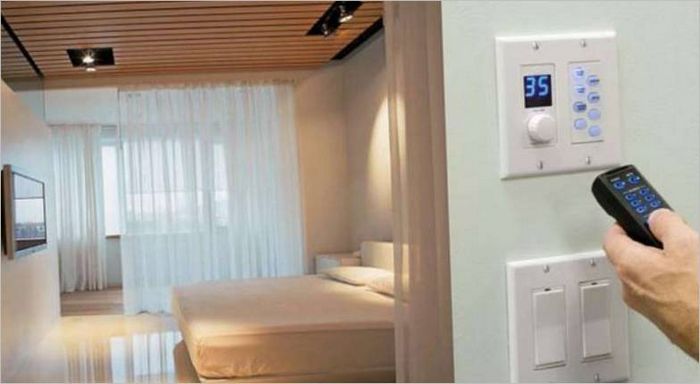
Purpose and benefits of automation
Automated heating systems are designed to maintain a microclimate in buildings and rooms that is most comfortable for work and rest. In addition, due to the possibility of more rational use of energy resources, such systems are much more efficient than traditional systems.
Comfortable room temperature is set by thermostats or temperature sensors that constantly monitor changes in temperature and allow the heating system to take into account all current factors affecting room temperature: human heat, solar heat, heat from lighting fixtures, radiation from other electrical appliances, etc.
If directly in the heating point of the building are used the means of automatic regulation of the coolant flow that monitor the outdoor temperature, it gives an energy savings of about 15-20%. Use of thermostatic valves on heating radiators reduces energy consumption by an additional 5-7%.
Automatics also allow for flexible temperature control in the premises at different times of the day. In transitional calendar periods autumn/spring , characterized by temperature instability, the automated system will reduce the heat output in the hours/days when the air temperature rises significantly.
If the heating system is equipped with GSM-modules, it makes it possible to monitor the thermal regime of the building/premises remotely, for example, using mobile devices.
Energy Saver Tips
An effective way to save energy is the use of automation devices that allow different day and night temperatures in the premises. For example, in non-residential premises the temperature can be reduced at night and set exactly at a comfortable level during the day, but not higher. This is important because raising the temperature by just one extra degree increases energy consumption by 5-7%.
It is possible to save the heat in the residential premises. Automatics with a timer-programmer according to the individual needs of the user will regulate the temperature of heating and heating operation time in a particular preset mode. While the residents are at home, the system will maintain a comfortable temperature, but when they are at work, studying, travelling, etc., the temperature in the apartment will remain the same.p. – It switches to economy mode and provides the minimum required temperature e.g. for plants or pets .
A serious means of saving in the operation of heating systems is also the use of energy efficient technologies such as heat pumps and condensing steam boilers.
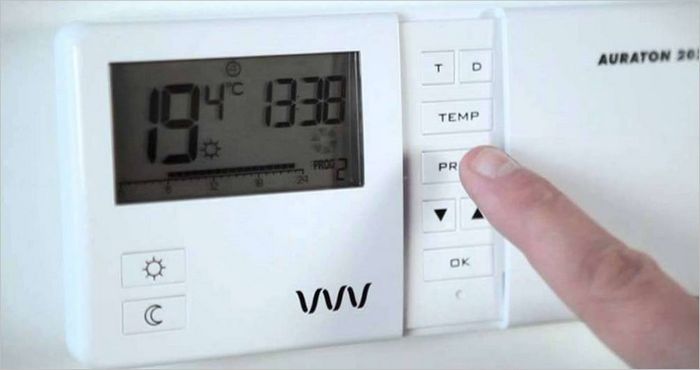
Types of automation devices
To change the temperature in heating systems two-position regulation devices thermostats and smooth regulation devices temperature sensors are used.
Thermostats are used to maintain a constant room temperature. They work on the principle of the heating boiler heating system shutdown when the desired temperature is reached, and respectively – turn on when the temperature drops below a predetermined level. These are the most simple and reliable devices for indoor climate control. Thermostats provide a sufficiently high level of comfort and fuel savings of up to 20%. They are ideal for use in individual heating of apartments and other small spaces.
Stepless control devices – temperature sensors – allow you to maintain room temperature at a predetermined level, regardless of changes in street temperature, as well as reduce energy consumption. They are connected to the steam boiler system and transmit the temperature values to it, according to which the automatic system selects the desired temperature of the coolant. Thermostats have a higher precision than thermostats, and thanks to the timer function with remote control and programming module, can also provide an increased level of comfort in the room and save energy.
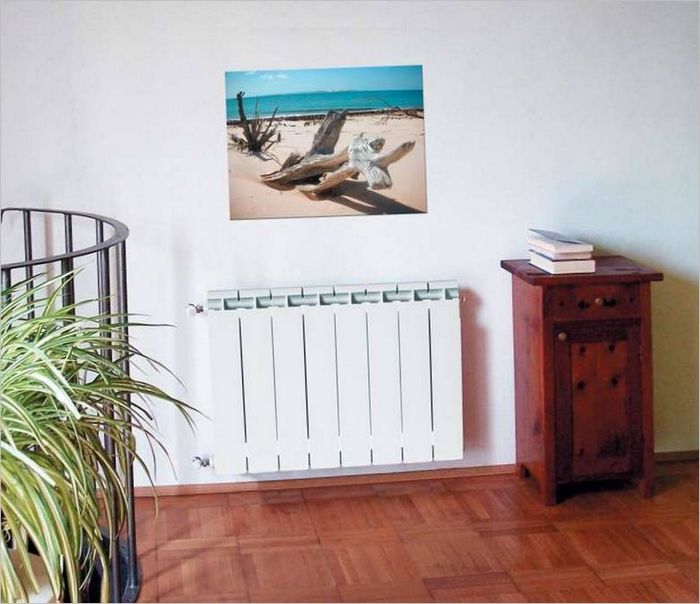
Requirements for radiators for automated heating systems
Efficient operation of automated heating systems is impossible without the use of radiators, which have several necessary properties. Firstly, such radiators must have low thermal inertness, t.e. They heat up and cool down quickly, which allows the automation system to flexibly control the temperature in the room. Secondly, radiators must have a high heat emission, which makes it possible to use relatively small volumes of liquid heat carrier in the heating system. As a result – an additional reduction of inertia of the system, as well as increasing its energy efficiency.
Choice of radiator material
Among radiators on the market, only those made entirely of aluminum alloys meet the above requirements. Of all the materials used in the manufacture of radiators, aluminum has the lowest thermal inertness and the highest heat dissipation with a low specific weight. In addition, its high manufacturability ease of fabrication of structures with large fin area allows additional and significant increase of heat output of finished radiators.
Bimetallic and steel screen radiators, while yielding slightly to aluminum in heat dissipation, lose out due to greater thermal inertness and heavier specific weight which makes installation more difficult . Cast-iron radiators are even more lagging behind by these two indicators. In addition, it is much more difficult to produce from this material durable and compact design with a large number of fins, and on the necessary flow of the coolant traditional cast iron radiators are the absolute “best losers.
Added to the already listed advantages of aluminum radiators are ease of installation low weight of construction and affordable prices aluminum is a widespread and easy-to-process metal .
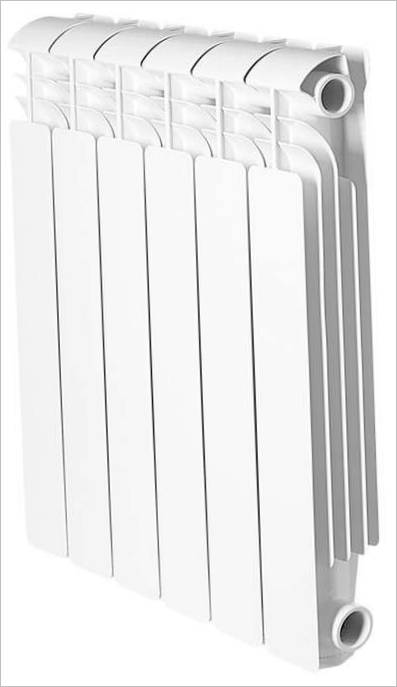
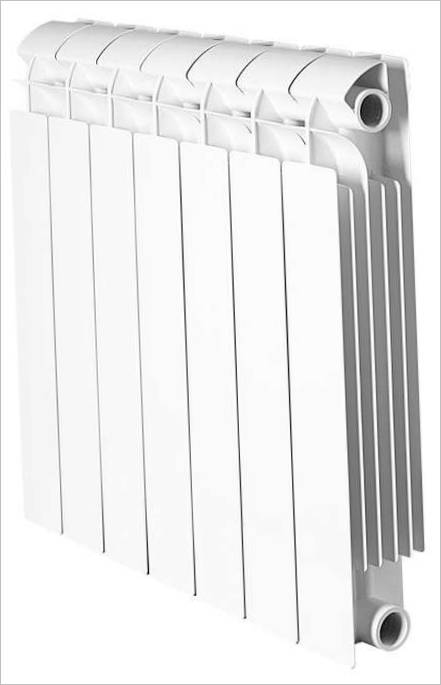
Aluminum radiators Global
Recommendations for the selection of aluminum radiators
So, aluminum radiators are the only right choice for an automated heating system. But are they all equally suitable for this purpose? Our answer is no. The fact that the American market is flooded with cheap products from the Asian region, which has a number of drawbacks that do not allow you to recommend it for the construction of reliable heating systems.
First of all it should be said about the fact that many Chinese factories in the production of radiators do not provide stability of such important characteristic as heat transfer. In addition, this figure is often overstated in the data sheet, which leads to errors in the calculation of heating systems. The second serious problem is insufficient strength and reliability of construction of radiators produced by small factories without smoothly running quality control system. Important role in radiators durability is played by their corrosion protection inside and quality painting outside. But even these means are often neglected by Asian producers for the sake of cheaper production.
To avoid unpleasant surprises in operation, for heating systems should choose the products of major companies, well proven in the domestic market and have a branched network of official trading partners. One of these companies is the Italian company Global, which produces radiators since the 70’s of the twentieth century and has been present in America and the CIS for over 20 years. High-tech production and own research base of this company are a guarantee of reliability and durability of products. In addition, the use of only high-quality certified aluminum alloy in the production provides an additional advantage of radiators Global over competitors, as a higher heat transfer at a lower temperature of the coolant. This becomes especially important when using heat pumps and condensing steam boilers in the heating system.
Conclusions
Heating system – is one of the most important components of maintaining the necessary conditions of a home or work, especially in harsh American climates. Competently designed and built system provides not only the necessary level of comfort, but also significant savings in the long term. That is why it does not make sense to save money on any components, whether it is equipment for heat generation, means of control automation or final devices – heating radiators. The best effect can only be achieved and maintained for a long time if the right balance is maintained.

How do automated heating systems perform in terms of maintaining a comfortable temperature? Are they reliable and energy-efficient enough to justify their installation and operation costs?
Are automated heating systems making your space warm and cozy, my friend? I’m curious to know if you’ve embraced this technology and how it’s been working for you. Does it provide efficient and consistent heating? Any concerns or challenges you’ve faced? Share your experience with automated heating systems, I’m eager to hear!
Is it warm for you, dear fellow? I’m curious to know about your experiences with automated heating systems. Do they effectively maintain the desired temperature in your home or office? Are they easy to operate and adjust? Have you noticed any cost savings or improved energy efficiency since using these systems? Any challenges or drawbacks you’ve come across? I’m considering installing one and would greatly appreciate your insights!